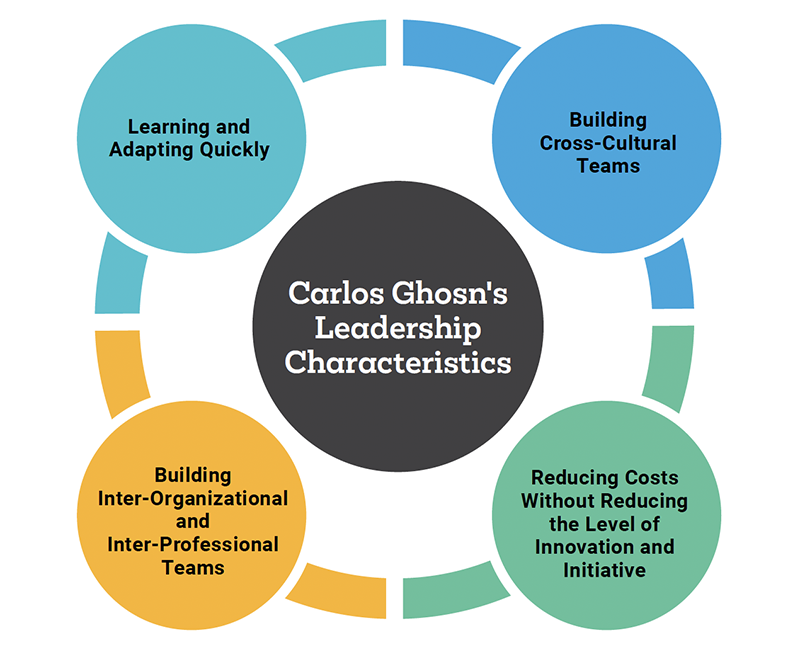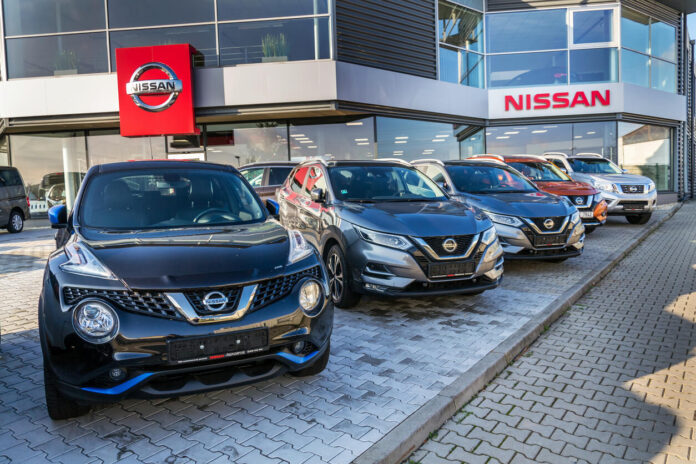By Mostafa Sayyadi and Michael Provitera
Leadership is not about leading oneself. That is a given. It is about developing leadership that provides future leaders the opportunity to think and act in a way that advances society. Carlos Ghosn’s leadership story has great lessons for leadership development for future leaders. Our hands here are in the future leaders who will have the opportunity to experience the actions and powers of current leaders effectively or ineffectively, based on how we teach and train them.
Introduction
Nissan, one of the largest automobile companies in the world, exists in an era of champion breeding and teamwork. “Nissan 180” consisted of a vision and a goal but could add huge value to corporate strategy. The program caused further developments and the secret of their success is in the word “transparency”. One of the tenets of the Malcolm Baldrige National Quality Award is to share your experience and success. Nissan follows a similar rule, they have nothing to hide, and all customers and stakeholders will have a clear image of the company without any restrictions.
Many of the common and conventional management methods do not work in Japan because there are major doubts about the Western ways of doing business and doing business in this country.
Nissan has opened a new factory in America, which is a great success. On October 6, 2022, Nissan celebrated 5 million vehicles produced at the Mississippi plant and advanced electric vehicle (EV) transformation. The employees had been afraid that the doors of the factory would be closed due to the lack of continuous profitability and the lack of proper leadership, but now the company’s president and operations manager Carlos Ghosn has prepared for an official ceremony to put an end to these fears. This factory was built in the state of Mississippi, America, and it was done as a result of the recommendation of the governor of this state to Nissan officials. In this way, Ghosn impatiently awaited the opening ceremony in an unfamiliar land. Various people had gathered there to listen to Ghosn’s speech. Ghosn begins his speech. He talks about his efforts to revive Nissan and emphasizes the company’s goal of making a profit within one year. He says that Nissan will employ thousands of people in the Mississippi factory and will offer new products. Ghosn says:
Making the right products in the right markets is the basic factor of establishing profitable and stable economic growth, and this is exactly what we want to do here, and Nissan’s investment is an important part of it. The Nissan factory will produce a regular van, a sports car, and the next-generation Nissan Minion. This program is a significant and important development in our work program in the American market. This program will increase our responsiveness to the market, reduce costs, and reduce our vulnerability to currency financial fluctuations.1
For Nissan and Ghosn, returning Nissan to its position as one of the most famous car manufacturers in the world is the goal.2 When Ghosn entered the Nissan company, the company was in a downward spiral, and to find a way to save it, Ghosn had to use all his training and experience working at Michelin and Renault. Many of the common and conventional management methods do not work in Japan because there are major doubts about the Western ways of doing business and doing business in this country.3,4 For this reason, Ghosn used his experiences to create a unique leadership style in Nissan, never doubting his belief in his strategy of recovery. Ghosn says:
It is a big challenge. But we have come from hell and we are trying to reach purgatory. We have to change quickly. The new product is the key to the revival of Nissan. Our investment in the Mississippi factory is a very important part of our future.4
The Characteristics of Carlos Ghosn’s Leadership

1. Learning and Adapting Quickly
Ghosn believes that what a person learns from observing the differences in others helps him or her to gain wealth in various ways. One of Ghosn’s old friends and colleagues says that he quickly learns many things from any culture he is exposed to.5,6 Ghosn’s first job was working at Michelin in France and at the lowest possible level, that is a class job in a production workshop. The first thing that Ghosn observed in the factory was the hatred of the factory workers toward the management. Especially the managers who were unaware of the daily work and challenges related to the workers’ jobs or were indifferent to it. He learned a valuable lesson there that he could use later as a senior manager: Employees at every level in the organization have solutions for problems.
Ghosn believes that what a person learns from observing the differences in others helps him or her to gain wealth in various ways.
Ghosn went through the ranks of promotion in the French factory quickly and when he was 26 years old, he took over the management of more than 700 workers and employees in the factory. In 1985, when Ghosn was only 30 years old, he was appointed to the position of chief operating officer of Michelin’s troubled South American division. He was asked to transform this department. Ghosn was experiencing severe inflation. Ghosn says:
I had to change the salary of the employees once or twice every month. It was an experiment, but I really wanted to do it. I had to do it at any cost.4
2. Building Cross-Cultural Teams

Carlos Ghosn believed that economic conditions were only part of the problem, so he formed cross-cultural teams to find solutions.7 This was a preliminary and nascent effort in cross-cultural work, which in the future was known as Ghosn’s special leadership style.8 This cross-cultural work removed the existing barriers between the French and Brazilians, brought success to the company, and made Michelin’s South American unit profitable within two years. 1998, the third year of Ghosn’s activity in Brazil, was the most profitable period of the company, and it was considered a major progress in the work for Ghosn. As a result, he was chosen as the senior manager of the American unit of Michelin. Ghosn came to America quietly and with full transparency. He showed the employees that he does not have any pre-determined plans and relies on their help and participation to meet the needs of the company. Ghosn issued some immediate orders and instructions to the American unit. He was just asking questions. This was his special style of leadership and it showed that he came without any preconceptions and wanted to get to know the issues through hearsay. His specific leadership strategy was:
- Don’t make any assumptions (find answers to questions inside the company)
- Work quickly but effectively
- Earn trust and respect with followers but also gain strong results
3. Building Inter-Organizational and Inter-Professional Teams
For the first time, Ghosn had the opportunity to focus his attention on the principles of theoretical and pure management, such as consumer satisfaction and internal organizational structure. The merger of Goodrich and Michelin forced Ghosn to look for ways to combine completely different cultures and work philosophies. He used methods similar to the method he used in South America, he formed teams of employees with different cultures and work backgrounds within the organization. This brought together those who did not establish a relationship with each other, except with the guidance of a strong force. Some teams included French and Americans, and some included engineers and purchase managers. This was Ghosn’s biggest step in solving problems with the help of inter-organizational and inter-professional teams. The creation of inter-professional teams made it possible for the French and the Americans to more effectively integrate their leadership styles and management techniques and methods. He says:
The fact that I was not French or American worked. In such conditions, people will never associate your decision with short-sightedness and cultural short-sightedness. When a person wants to implement extensive changes, then being a foreigner will be a great privilege and blessing.9
4. Reducing Costs without Reducing the Level of Innovation and Initiative
Ghosn moved to Paris in 1996 and worked as manager number 2. After a while, he realized that Renault was facing problems and experienced its first loss of one billion dollars in 1996 after ten years. Ghosn saw Renault as a company that relied heavily on the domestic market and was paralyzed by past failures. As the deputy of Renault company, Ghosn was responsible for research, purchase, production, engineering, and programs related to the car. His main responsibility in compensating the heavy losses of the company was very simple: reducing costs.
The creation of inter-professional teams made it possible for the French and the Americans to more effectively integrate their leadership styles and management techniques and methods.
He studied and analyzed the company’s situation and came to the conclusion that cost reduction in all stages was necessary for Renault for the company to regain acceptable financial strength.10,11 The result of this study was the presentation of a three-year plan to reduce operational costs by 30 billion French francs in three years, a number that seemed unattainable at that time. Ghosn’s plan and method of reducing costs included reducing costs in all departments, from the administrative part to the engineering and production part. His program was careful not to reduce the level of innovation and initiative in Renault and in fact, it was designed in a way that created more opportunities for jobs and growth of the company in the long term.12 Early strictness produces a better child. Ghosn says:
I knew it would be a difficult job, but the best way for me to join the Renault team was to accept these difficult conditions.12
The program was fruitful. By 1997 Renault was back to profitability, and by 1998 Renault was strong enough that when Ghosn proposed to his colleagues to buy a controlling stake in the struggling Japanese company Nissan, none of them laughed at it.
Figure 1: The Leadership Characteristics of Carlos Ghosn

Conclusions
Carlos Ghosn’s special leadership style has helped Nissan effectively calculate risk-taking. Simply put, Nissan’s boldest actions and activities in terms of accomplishing sustainable development and growth and organizational profitability have proven to be successful. The goal is not just to deliver a car, but to deliver a successful car that reinforces Nissan’s emerging image as an innovative automaker. The intention is not just to make a flashy car, now Nissan is an organization that is evolving in the future with a new EV look, new colors, and extraordinary amenities.







































